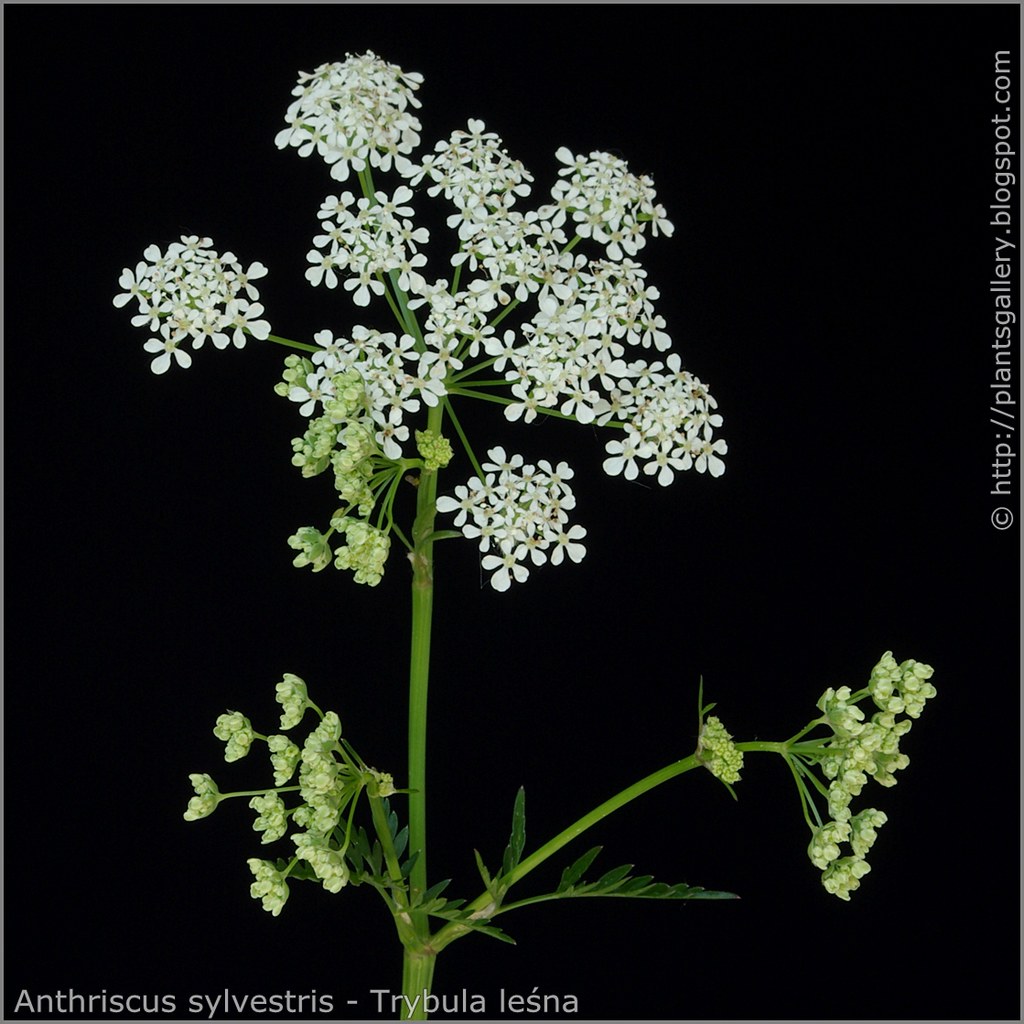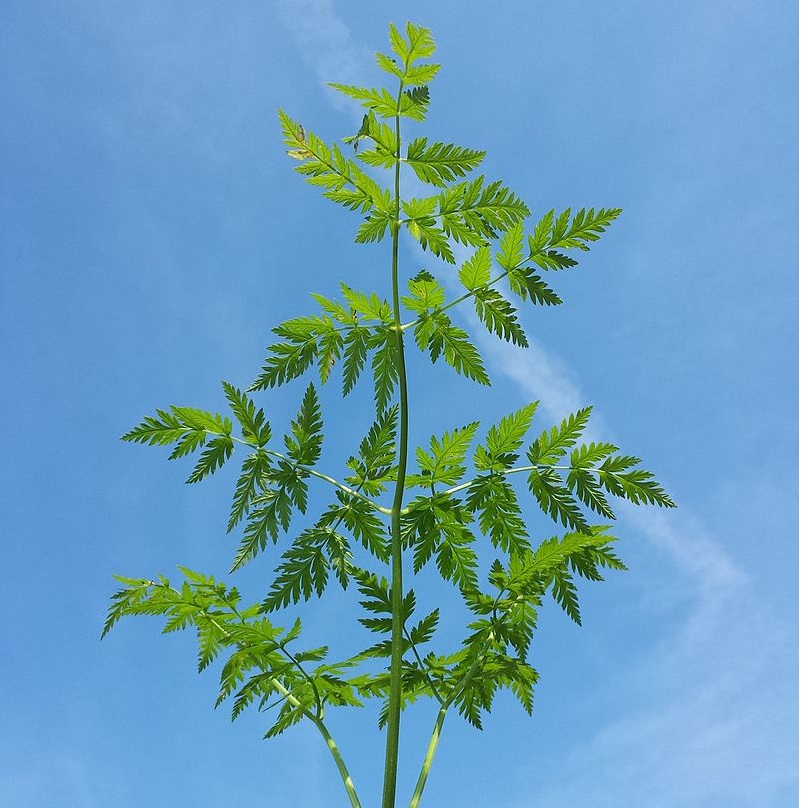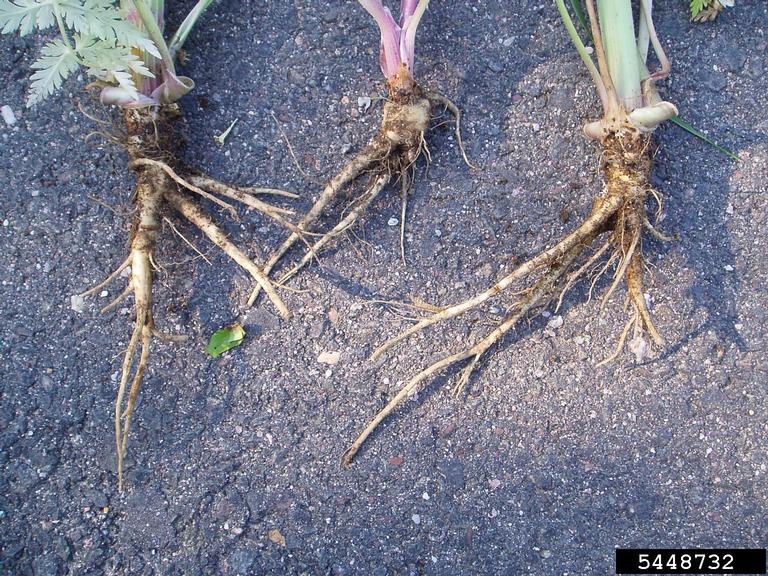Wild Chervil (Cow Parsley)

Wild Chervil (Cow Parsley)
(Anthriscus sylvestris)
Priority: - Contain / Annual Control
Tags: Agricultural
Identification and Reproduction
Identification
- Biennial, short-lived perennial that is in the carrot/parsley family.
- Grows upright and can almost reach two metres tall
- Wild chervil has white flowers in umbrella-like clusters, with bract-like leaves under flowers. Clusters are found at the top of stem. Blooms occur from April to May.
- Leaves are triangular, finely divided, resembling ferns, softly hairy.
- Stems are ribbed, green, and has distinct hairs on lower portion
- Tuberous roots can extend almost two metres into soil.
Reproduction:
- Spreads rapidly through seed and vegetative fragments such as root buds.
- Seeds are easily dispersed by wind, animals and people.
- Its deep taproot makes it difficult to remove.
Look-alikes
Wild chervil has many look-alikes! The most commonly mis-identified look-alike plants are:
- Poison Hemlock (another invasive plant - Toxic! Do not consume and wear gloves when removing)
- Wild chervil stems are softly hairy, have ridges and leaf stems have a groove (similar to a celery stalk);
- Poison Hemlock stems are round, smooth and hairless with red/purple blotches
- Queen Anne's Lace (another invasive plant, sometimes called "Wild carrot")
- Wild chervil flowers in the spring (April/May)
- Queen Anne's Lace flowers in late summer (July/August), has a dark dot in the center of the flower cluster, and have bracts at the underside of the flowerhead
There are other plants that people may confuse with wild chervil - see here for a Look-alike Guide!
Habitat & Ecology
- Wild chervil prefers moist, rich soils that are moderately disturbed.
- It is only found in open habitats.
- It is commonly found along ditches, roadsides, fences, streambanks and moist woodlands.
- Wild chervil is deemed regionally noxious in BC.
Impacts
Social:
- Will crowd out forage plants.
- Can spread disease to crop species in the same family like carrot, parsnips, and celery.
Ecological:
- Displace native plants and reduce biodiversity.
- Can reduce wildlife habitat.
- It uptakes nutrients and water resources aggressively, out-competing natives vegetation.
Management
For further details on Wild Chervil control please refer to the Metro Vancouver Best Management Practices for Wild Chervil (pg. 12-23)
Chemical Control:
- Chemical control using commonly available product may not be effective due to the deep taproot - seek herbicide options that are formulated to target taprooted plants and have wild chervil listed on the label.
- Be cautious when purchasing wildflower seed mixes, especially if they are not locally produced. These can contain seeds of wild chervil and other invasive species.
Mechanical/Manual Control:
- Can be mechanically controlled if taproot can be entirely removed, this can be done through hand-pulling or digging.
- Mowing can help to prevent seed set, but will only help to suppress the plants and not eradicate/remove the roots, leaving the taproot to regrow later
- Bag and seal any removed parts for landfill. Do not compost roots or seeds.
Resources
For further details on Wild Chervil control please refer to the Metro Vancouver Best Management Practices for Wild Chervil (pg. 12-23)
Download the Metro Vancouver Factsheet on Wild Chervil here.
King County is also a good resource for historic and identification information, as well as a management guide.
The Government of Ontario is another good resource for explaining the history, identification, impacts, and spread of wild chervil.
Download A Guide to Weeds in British Columbia for Wild Chervil here.
Another resource to help compare wild chervil to simliar species is provided by E-flora BC.
View header photo here.






